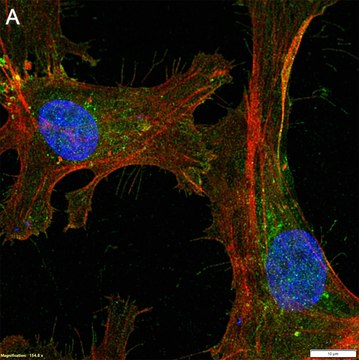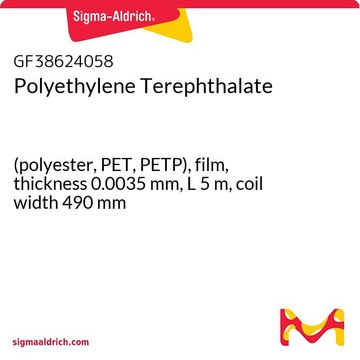GF52726608
Copper - O.F.H.C.
foil, 150x150mm, thickness 0.1mm, hard, 99.95+%
Synonym(s):
Copper, CV000560
Sign Into View Organizational & Contract Pricing
All Photos(2)
About This Item
Empirical Formula (Hill Notation):
Cu
CAS Number:
Molecular Weight:
63.55
MDL number:
UNSPSC Code:
12141711
PubChem Substance ID:
NACRES:
NA.23
Recommended Products
Assay
99.95%
form
foil
manufacturer/tradename
Goodfellow 527-266-08
resistivity
1.673 μΩ-cm, 20°C
size × thickness
150x150 mm × 0.1 mm
bp
2567 °C (lit.)
mp
1083.4 °C (lit.)
density
8.94 g/mL at 25 °C (lit.)
SMILES string
[Cu]
InChI
1S/Cu
InChI key
RYGMFSIKBFXOCR-UHFFFAOYSA-N
General description
For updated SDS information please visit www.goodfellow.com.
Legal Information
Product of Goodfellow
Regulatory Information
新产品
Choose from one of the most recent versions:
Certificates of Analysis (COA)
Lot/Batch Number
It looks like we've run into a problem, but you can still download Certificates of Analysis from our Documents section.
If you need assistance, please contact Customer Support.
Already Own This Product?
Find documentation for the products that you have recently purchased in the Document Library.
Donita C Brady et al.
Nature, 509(7501), 492-496 (2014-04-11)
The BRAF kinase is mutated, typically Val 600→Glu (V600E), to induce an active oncogenic state in a large fraction of melanomas, thyroid cancers, hairy cell leukaemias and, to a smaller extent, a wide spectrum of other cancers. BRAF(V600E) phosphorylates and
Jonas Duus Stevens Lekfeldt et al.
Environmental pollution (Barking, Essex : 1987), 194, 78-85 (2014-08-06)
Copper (Cu) is known to accumulate in agricultural soils receiving urban waste products as fertilizers. We here report the use of the leucine incorporation technique to determine pollution-induced community tolerance (Leu-PICT) to Cu in a long-term agricultural field trial. A
L Marchand et al.
Environmental pollution (Barking, Essex : 1987), 193, 205-215 (2014-07-25)
Intra-specific variability of root biomass production (RP) of six rooted macrophytes, i.e. Juncus effusus, Phragmites australis, Schoenoplectus lacustris, Typha latifolia, Phalaris arundinacea, and Iris pseudacorus grown from clones, in response to Cu exposure was investigated. Root biomass production varied widely
Julie E Gleason et al.
Proceedings of the National Academy of Sciences of the United States of America, 111(16), 5866-5871 (2014-04-09)
The human fungal pathogens Candida albicans and Histoplasma capsulatum have been reported to protect against the oxidative burst of host innate immune cells using a family of extracellular proteins with similarity to Cu/Zn superoxide dismutase 1 (SOD1). We report here
Adam Southon et al.
Metallomics : integrated biometal science, 5(10), 1346-1356 (2013-08-02)
Copper (Cu) is an essential redox active metal that is potentially toxic in excess. Multicellular organisms acquire Cu from the diet and must regulate uptake, storage, distribution and export of Cu at both the cellular and organismal levels. Systemic Cu
Our team of scientists has experience in all areas of research including Life Science, Material Science, Chemical Synthesis, Chromatography, Analytical and many others.
Contact Technical Service

